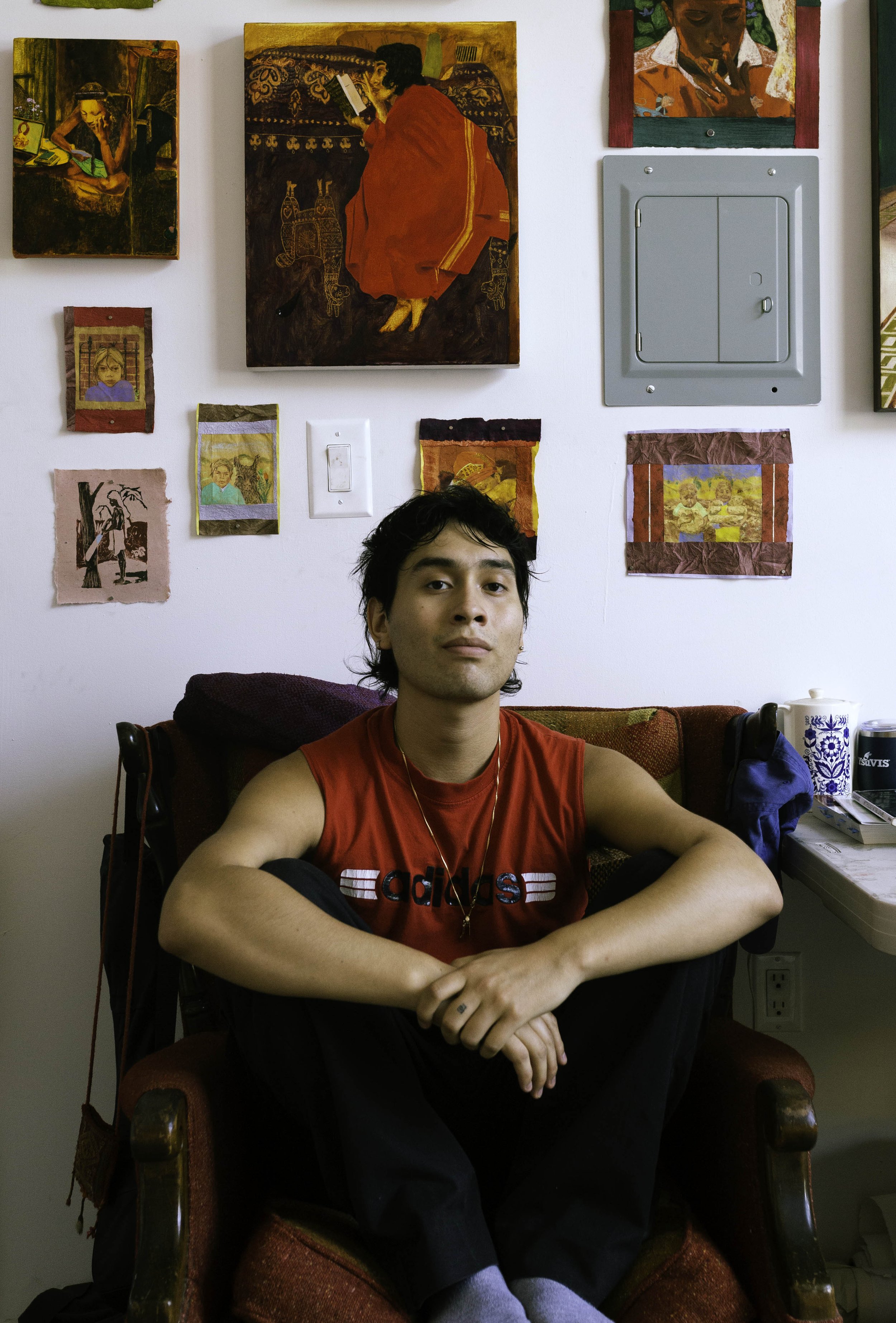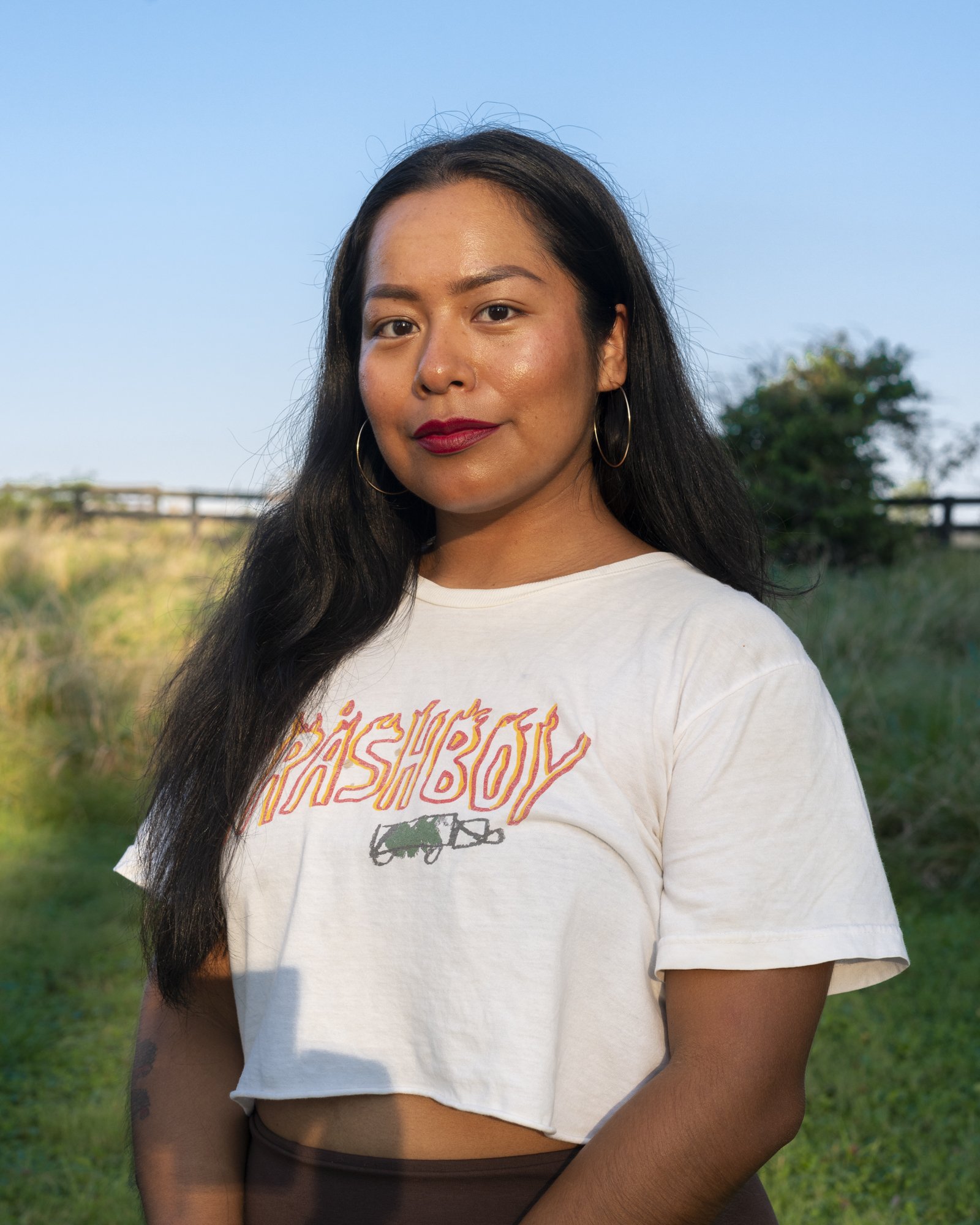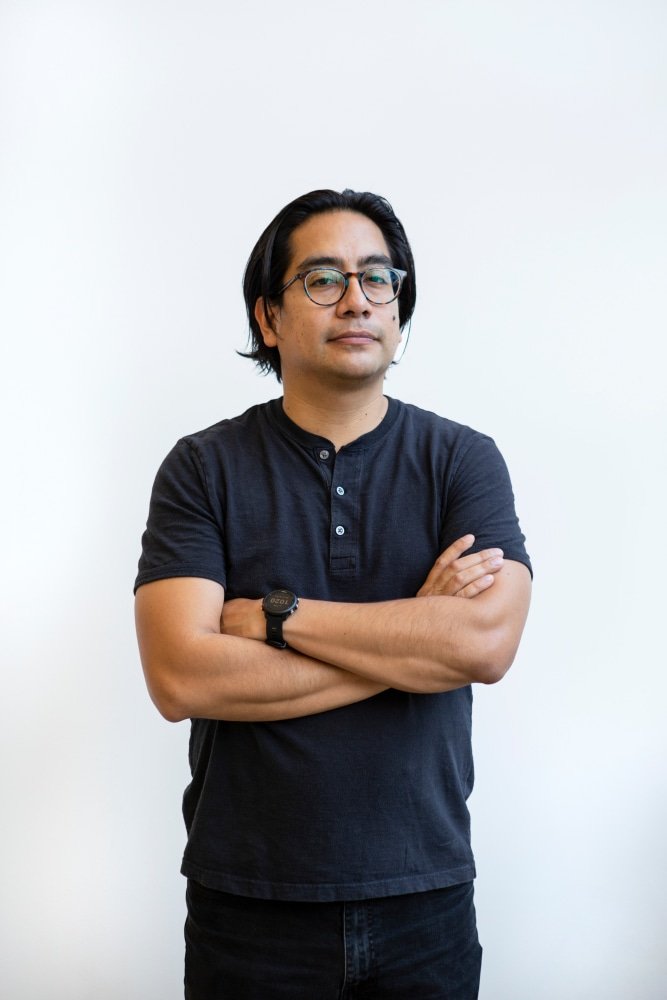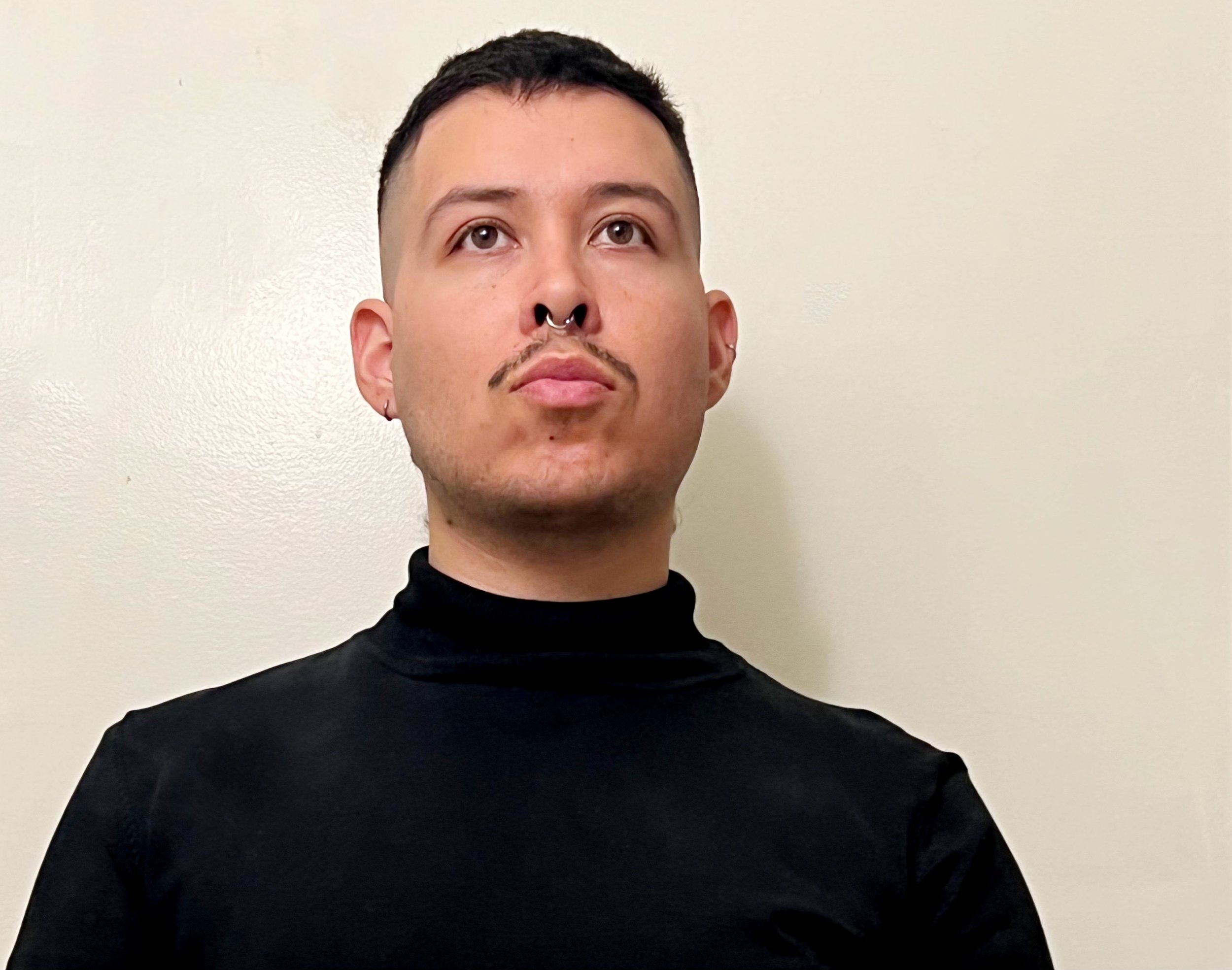Join us for an artist panel with our A.I.R and artists Lorena Cruz Santiago & Ronny Quevedo as they dialogue with the curator of the exhibition Tinkuy: Converging Ecologies. This conversation will explore our relationships with the larger cosmologies, loved ones, and the different ecologies that emerge by deepening our relationships with indigenous knowledge.
Participants
Pachi Muruchu is an Ecuadorian painter whose work builds upon millennia of indigenous Andean knowledge and cultural labor. He was born in Azuay, a highlands province in Ecuador, but has lived the majority of his life in Spanish Harlem. A recent graduate from RISD's 2021 class, Pachi's work focuses on animistic storytelling from his ancestral Andean geographies and the Lenape territory he grew up in. His images weave centuries of indigenous storytelling with contemporary experiences. He was part of The Clemente's group show, The Fight to Free Leonard Peltier - Honoring Indigenous Culture and Heritage. Muruchu will have a solo show at Friends Indeed Gallery in October 2022. Currently, he is the Artist in Residence for the Latinx Project.
Lorena Cruz Santiago is an artist working across photography, video, and installation informed and inspired by her family’s indigenous origins in Oaxaca, Mexico. Her work covers topics of migration, assimilation, labor, and more recently, collaborative image-making with her parents as a form of indigenous autonomy. Cruz Santiago holds a BFA in Photography from Sonoma State University (2016) and an MFA in Photography from Cranbrook Academy of Art (2019). She has been an artist-in-residence at ACRE (Steuben, WI), Ox-Bow School of Art and Artists’ Residency (Saugatuck, MI), Pocoapoco Residency (Oaxaca City, Oaxaca, MX), Oak Spring Garden and Foundation Residency (Upperville, VA), Darkroom Detroit (Detroit, MI) and Chalk Hill Residency (Healdsburg, CA). Her work has been included in shows at El Comalito Collective (Vallejo, CA), Urban Institute for Contemporary Arts (Grand Rapids, MI), Cranbrook Art Museum (Bloomfield Hills, MI), and with ACRE Projects in Chicago, IL. She is currently based in Detroit, MI.
Ronny Quevedo (b. 1981, Guayaquil, Ecuador) works in a variety of mediums including sculpture and drawing. He received his MFA from Yale University and BFA from Cooper Union. Quevedo's work was been exhibited at the Denver Art Museum; the Albright Knox Gallery; Foxy Productions; Upfor Gallery; James Fuentes Gallery; the Whitney Museum of American Art; Socrates Sculpture Park and the Queens Museum. Solo presentations include Silueta, Rubber Factory and no hay medio tiempo / there is no halftime, Queens Museum. Group exhibitions include Pacha, Llaqta, Wasichay: Indigenous Space, Modern Architecture, New Art at the Whitney Museum and the traveling exhibition Monarchs: Brown and Native Contemporary Artists in the Path of the Butterfly. His work has been reviewed in Art Forum and Hyperallergic. His work is held in the permanent collections of the Whitney Museum of American Art, the Denver Art Museum and other world-renowned cultural institutions. His work is highlighted in Latinx Art: Artists, Markets, Politics by Arlene Davila.
Quevedo is a recipient of a Jerome Hill Artist Fellowship and A Blade of Grass Fellowship for Socially Engaged Art. He has held residencies at the Museum of Fine Arts Houston, Project Row Houses and Skowhegan School of Painting & Sculpture.
Xavier Robles Armas manages the communications, events, and arts programs at the Latinx Project. He is an artist and curator, based in Brooklyn by way of Santa Ana, Calif., with a background in architectural studies and MFA in photography from the School of the Art Institute of Chicago. His research connects notions of migration, culturally specific leisurely practices, affect theory, philosophies of becoming, and Mexican-American literature. He is specifically interested in the role of the cultural institution as a place for porous learning and experimentation in uplifting new narratives in art. He has previously held roles at the Queens Museum, SAIC’s Sullivan Galleries, the Art Institute of Chicago, and Southern Exposure.





